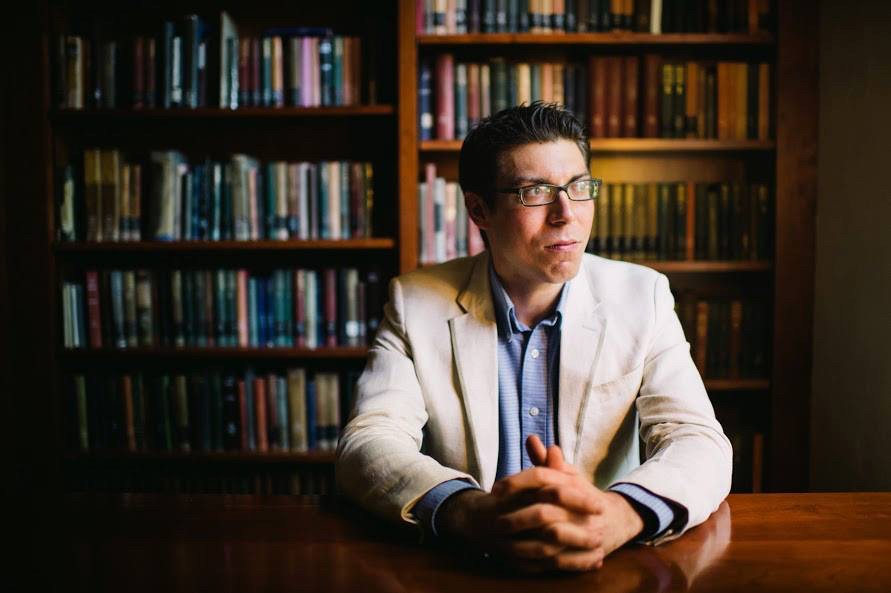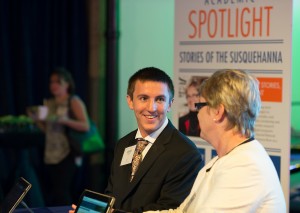Alfred K. Siewers developed the courses Visions of the Susquehanna as part of the Bucknell on the Susquehanna program in 2011, and it examined how early American views of nature developed along the Susquehanna River. Students explored how James Fenimore Cooper’s famous cycle of novels The Leatherstocking Tales (best known for The Last of the Mohicans), and what is considered the first published book of nature writing by an American woman, Rural Hours, by his daughter Susan Fenimore Cooper, reimagined the source of the Susquehanna River in the early nineteenth century. By writing literary landscapes to fill the perceived cultural vacuum left by an earlier era of Indian removal, they also contributed to a critique of American subjugation (in the name of what became known as Manifest Destiny) of both nature and native peoples. The course also compared the elder Cooper’s literary perspectives on nature with those of two famous contemporaries also associated with the Susquehanna, the English Romantic poet Samuel Coleridge and the scientist-clergyman Joseph Priestley. In addition, it included a comparative reading of Susan Cooper’s “Rural Hours” and the contemporary “Walden” by Henry David Thoreau. Students considered the legacy of the Coopers’ writings on American views of nature, including the Leatherstocking Tales’ influence on figures such as Theodore Roosevelt and his establishment of America’s National Parks. Their readings included perspectives from environmental criticism (ecocriticism) and environmental philosophy, which helped identify early evidence for a subversive tradition in American nature writing. Course activities included a field trip to Cooperstown, NY, and Lake Otsego, to connect readings with the area in which they are set, and discussion with conservation groups on the books’ continued influence on environmental efforts in the Susquehanna Valley
Schedule
Week 1, 8/25
Introductions and The Deerslayer
Week 2, 9/1—Trip to Tall Timbers
The Deerslayer
Week 3, 9/8
The Last of the Mohicans
Week 4, 9/15
The Pathfinder
Week 5, 9/22
The Pioneers
Week 6, 9/29
The Prairie, Midterm Exam
Class Field Trip to Iroquois lands and Cooperstown, 10/1-10/2
Week 7, 10/6
Rural Hours and Walden: The Sublime and Transcendentalism
First Essay draft due, 10/9
Week 8, 10/13
Rural Hours and Walden: Regional Alternatives to Transcendentalism?
10/14-10/15 Susquehanna River Symposium on Bucknell campus
Week 9, 10/20—Trip to the Priestley House
Priestley readings
Week 10, 10/27
Priestley and Coleridge readings
Week 11, 11/3
Coleridge readings
Week 12, 11/10
Coleridge readings
Second Essay draft due
Week 13, 11/17
After-Life: Art and “Native Pragmatism”–Thomas Cole and “the Western” in popular culture, Emily Dickinson, Charles Peirce, John Muir, John Burroughs and Theodore Roosevelt
Thanksgiving, 11/24
12/1 Presentations/Last Day of Class
Final Exam date (Final version of final essay due by this time): Thurs. Dec. 8, 3:30 p.m.
Written Work
Two 6-8 page essays (including first drafts).
Week reflections: Commonplace book plus reflections on prompt regarding nature
Midterm and Final exams
Weekly quizzes
Group project on Map of Lake Glimmerglass and mapping the Leatherstocking Tales







